Substrate-Associated Plants
“WE <3 ACID!” -these plants
The sandstone hills of eastern Ohio contains acidic and dry substrates that are a great fit for the following plants…
Eastern Hemlock (Tsuga canadensis)
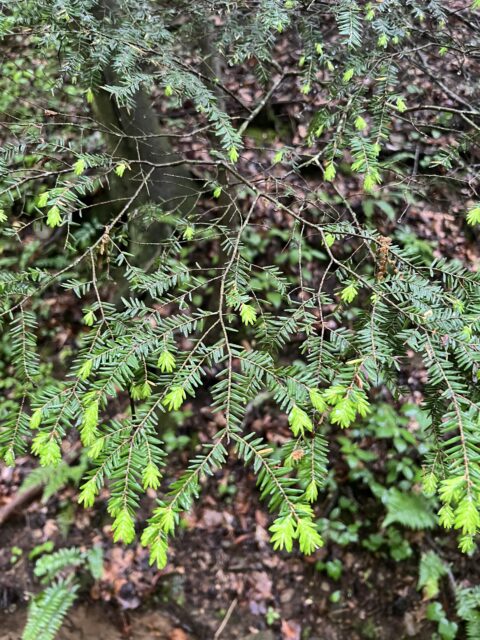
Eastern Hemlock
Here is an image of the conifer species, eastern hemlock, which has single attached needles, and twigs and needles arranged in flat sprays. They grow in acidic substrates.
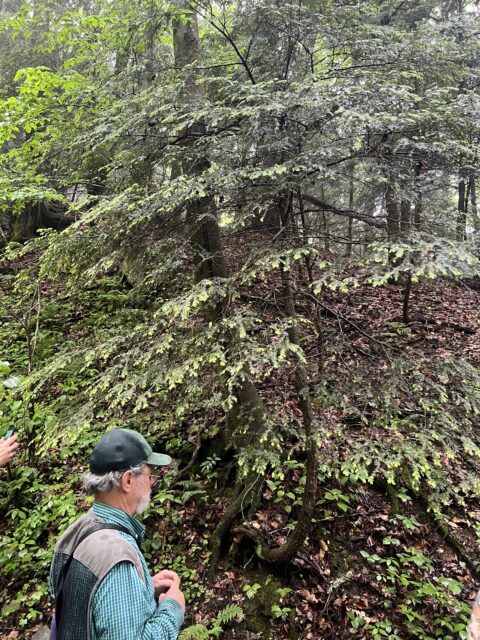
Eastern hemlock (full view)
Here is another images of the eastern Hemlock (featuring Dr. Klips). Eastern hemlocks can live for over 500 years, so they’ve definitely seen some things. Native Americans often used the inner bark to make bandages to cover sores and wounds. https://wp.towson.edu/glenarboretum/home/eastern-hemlock/#:~:text=Interesting%20facts,to%20cover%20wounds%20and%20sores.
Sourwood (Oxydendrum arboreum)
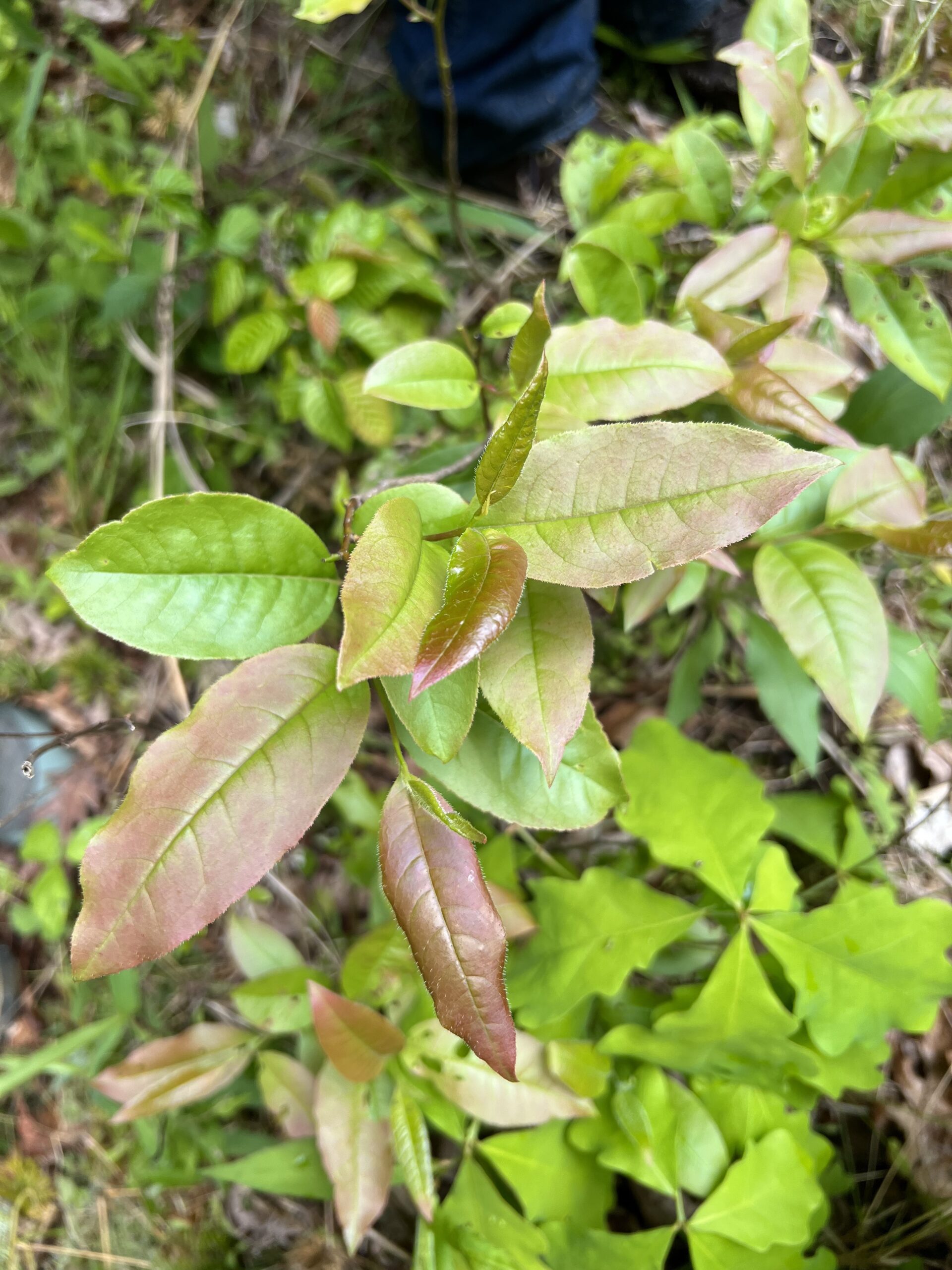
Sourwood
Sourwood is the only full-size tree with heath type flower and fruit clusters (Peterson Field Guide). This plant grows in acidic substrates. It is one of the only endemic trees that is not found in on other continents unless someone planted it there, and has no related species. The name of this plant comes from the taste of its leaves. Tea made from its leaves is used by mountain climbers to quench their thirst. Pioneers used the sap as an ingredient in a mixture used for treating fevers; people would chew the bark to soothe their mouth pains, and tea made from the leaves was used for treating diarrhea, indigestion and dysentery. https://www.arborday.org/trees/treeguide/treedetail.cfm?itemID=921#:~:text=A%20native%20tree%20of%20North,climbers%20as%20a%20thirst%2Dquencher.
Chestnut Oak (Quercus prinus)
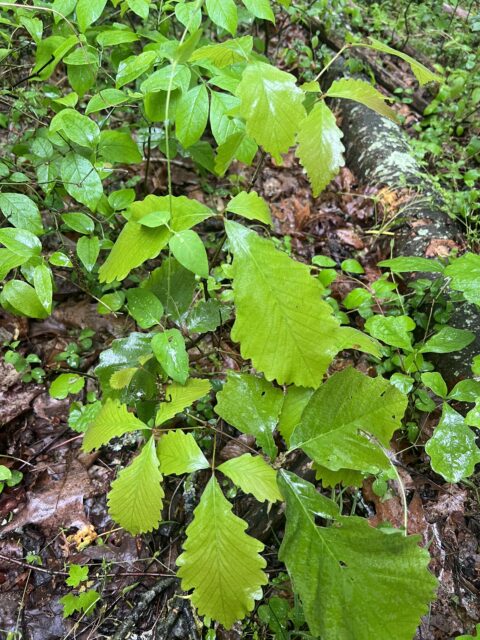
Chestnut Oak
Chestnut oak is an acid lover! A significant feature about this oak is that it can survive in steep and rocky terrain that other oaks cannot. They have alternate leaves with wavy margins. https://www.uky.edu/hort/Chestnut-Oak#:~:text=The%20chestnut%20oak%20is%20noted,its%20beautiful%20silvery%2Dwhite%20bark.
Deerberry (Vaccinium stamineum)
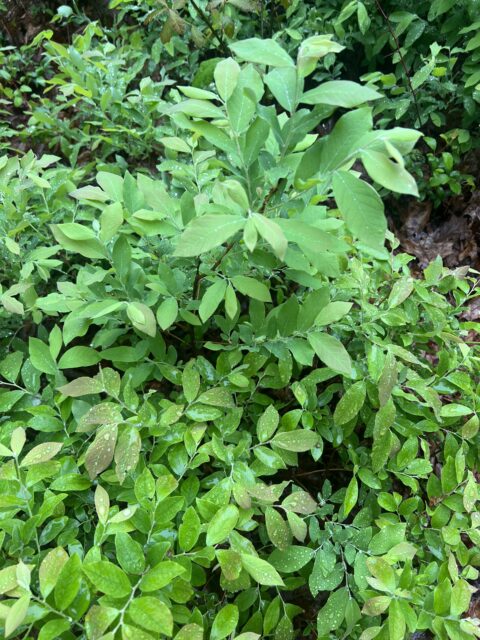
Deerberry
Deerberry is the last acid-lover I documented! It can reproduce via insect pollination, or through seed dispersal by birds or other mammals. It can also be pollinated by rhizomes underground forming colonies that can be several square meters. https://www.ontario.ca/page/deerberry#:~:text=Quick%20facts,colonies%20covering%20several%20square%20metres.
Rhizomes develop from axillary buds then grow horizontally. They protect the plant by helping perennial plants survive in harsh conditions such as cold, fire, and heavy foot-traffic. https://www.thespruce.com/rhizomes-2131103
Ferns
Sensitive Fern (Onoclea sensibilis)
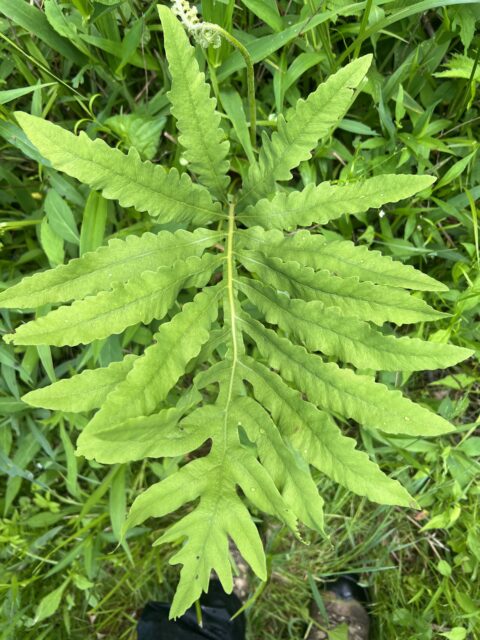
Sensitive fern
The frond type of the sensitive fern is holodimorphic. The frond dissection type is bipinnatifid.
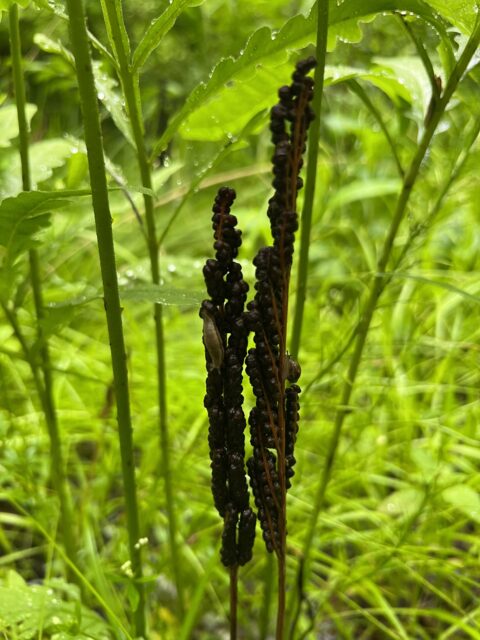
Sensitive fern sporangia
Their sori are contained in bead-like structures on the fertile fronds. I was unable to find information discussing the indusium type, so I am coming to the conclusion that it is absent. The bead-like structures act as an indusium, protecting the spores.
Maidenhair Fern (Adiantum pedatum)
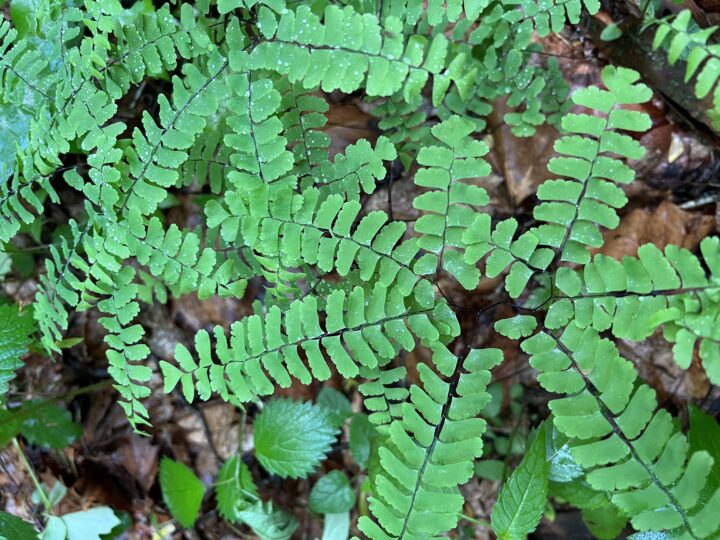
Maidenhair fern
The frond type of maidenhair is monomorphic. Maidenhair has a thrice-compound, arc-shaped frond dissection type. The have a false indusium type.
Christmas Fern (Polystichum acrostichoides)
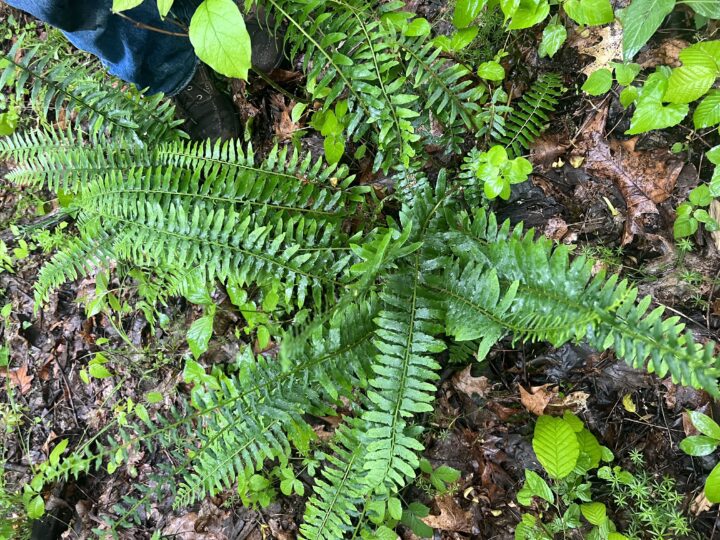
Christmas fern
The christmas fern has a pinnate dissection type, and a hemidimorphic frond type.
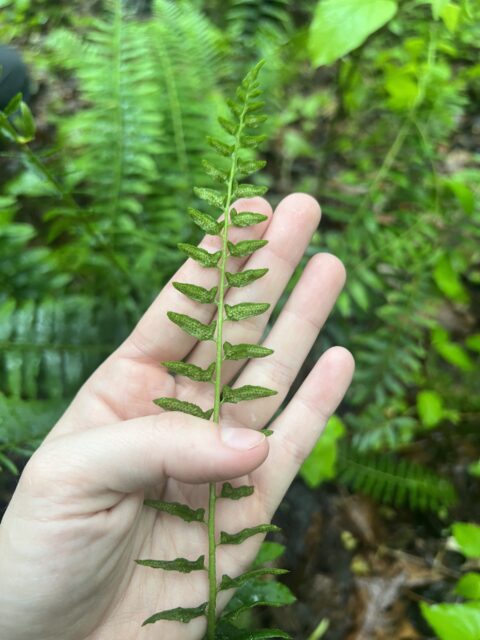
Christmas Fern – Sporangia
The christmas fern has a peltate indusium type!
Interrupted Fern (Osmunda claytoniana)

Interrupted fern
The interrupted fern is hemidimorphic with a pinnate-pinnatifid frond structure.
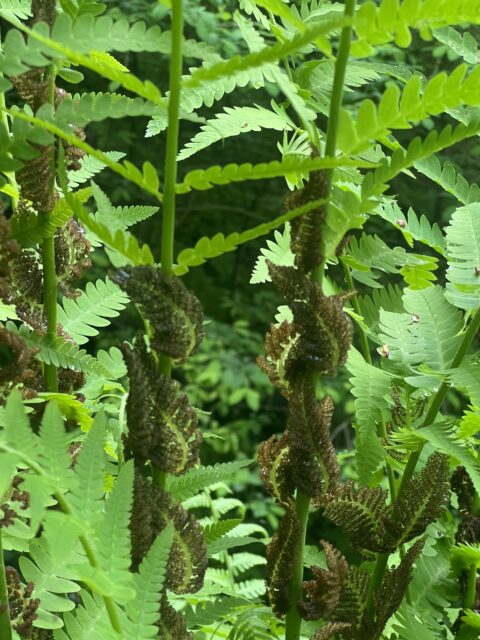
Interrupted fern sporangium
The interrupted fern has spore cases rather than an indusium.
The Appalachian Gametophyte
Vittaria appalachiana
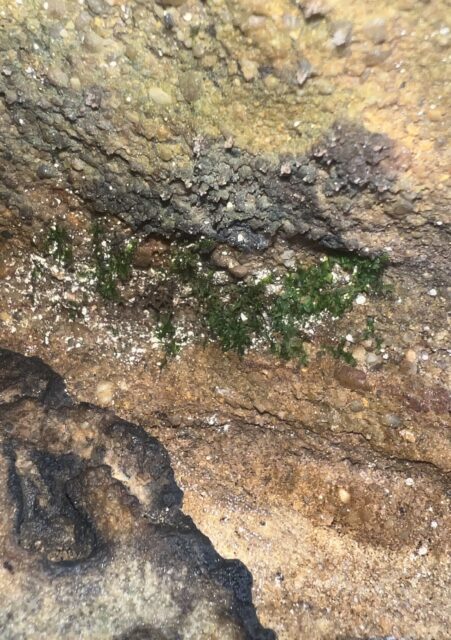
Appalachian Gametophyte
The Appalachian gametophyte is so remarkable because it never enters into the sporophyte phase of the typical fern lifecycle, and permanently remains in the gametophyte stage reproducing asexually via gemmae. The Appalachian gametophyte lives in a temperate environment, where as most other similar species that also remain in the gametophyte stage live in a tropical environment. Fern gemmae are much larger than spores, leading to restricted dispersal range of the gemmae. They are likely dispersed short distances by wind, water, or animals. Kimmerer and Young found that in bryophytes, gemmae dispersal has been done in short distances by slugs. This species is not found north of the last glacial maximum, even though studies have shown they are able to survive there. The species likely lost their ability produce either before or during the most recent ice age. It is not possible that the Appalachian gametophyte is being sustained by long-distance dispersal from a tropical sporophyte due to evidence found in allozyme studies, as well as the small range the species has where it extends into southern New York. The large range of the Appalachian gametophyte is likely due to spore dispersal from a time before the most recent ice age, possibly when temperatures in its range were more similar to that of a tropical environment, and when the species was able to exist in the sporophyte phase and use different, long-range dispersal methods.
Invasive Species
Multiflora Rose (Rosa multiflora)
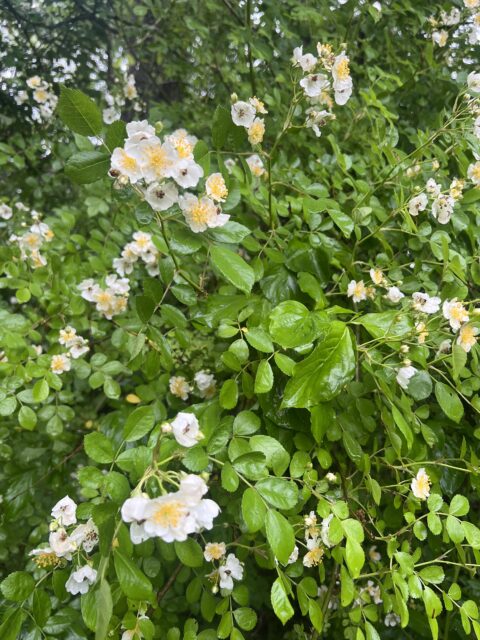
Multiflora rose – invasive (has feathery stipules instead of entire like native rose)
The multiflora rose is native to eastern Asia, but grows as an invasive species here in Ohio. They were originally brought here to serve the purposes of erosion control and to act as a living fence. They grow in very dense thickets which crowd out native species. It is recommended that people remove multiflora rose from their properties if they come across it, and to allow goats and sheep to graze on it in agricultural situations. https://www.invasivespeciesinfo.gov/terrestrial/plants/multiflora-rose
Japanese Stiltgrass (Microstegium vimineum)
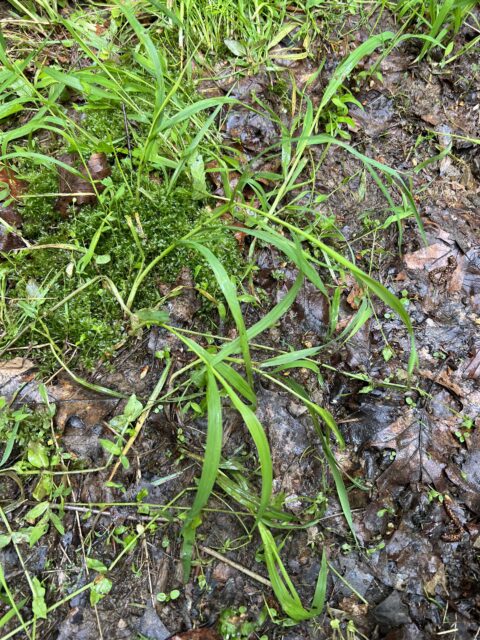
Japanese Stiltgrass
Japanese stiltgrass is native to Asia, but is considered an invasive species in several parts of the world. It was likely brought here while being used as packing for shipments from China. It can grow densely in many types of habitats where it crowds out native species. Hand pulling is reccomended for smaller areas of Japanese stiltgrass, but there are herbicides that can be used for larger areas. It’s important to avoid spraying any herbicides on plants you want to keep around, because they could get damaged in the process! https://www.invasivespeciesinfo.gov/terrestrial/plants/japanese-stiltgrass
2 BONUS PLANTS!
Shining Club Moss (Huperzia lucidula)
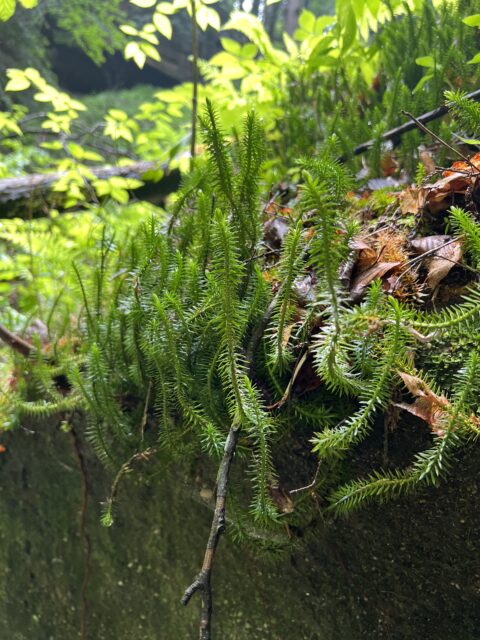
Shining club moss
The shining club moss, also referred to as shining firmoss, gets its name from its shiny, bright green leaves. It is among the acid-lovers and likes cool and moist forests. https://gobotany.nativeplanttrust.org/species/huperzia/lucidula/#:~:text=Facts,are%20widest%20above%20the%20middle
Bear Corn (Conopholis americana)
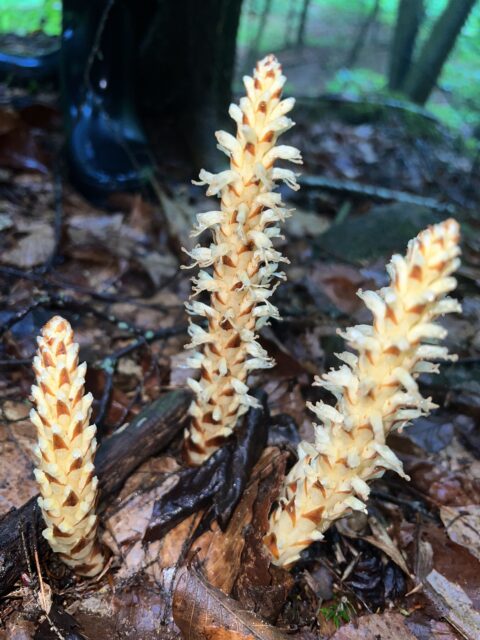
Bear corn
Bear corn is parasitic on a variety of species of oak. It does not photosynthesize or have true leaves. I feel like they could easily be mistaken for a fallen pine cone! https://learnyourland.com/bear-cornsquawroot-conopholis-americana-not-your-typical-plant/
